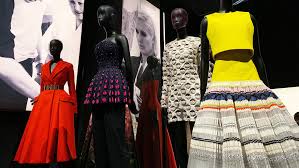The Evolution of Clothing: A Reflection of Human History, Culture, and Identity
Clothing has been an integral part of human civilization, serving not only as a means of protection from the elements, but also as a form of self-expression, cultural identity, and social status. From ancient civilizations to modern times, clothing has undergone a significant transformation, reflecting the social, economic, and technological advancements of human societies. This article will explore the evolution of clothing, its impact on human culture and identity, and the challenges faced by the fashion industry in the modern era.
Ancient Civilizations and the Origins of Clothing
The origins of clothing date back to ancient times, with evidence of textile production and clothing dating back to around 10,000 BCE. In ancient civilizations such as Egypt, Greece, and Rome, clothing was primarily functional, made from natural fibers such as cotton, wool, and silk. Clothing was also used to signify social status, with intricate designs and luxurious fabrics reserved for the elite.
In many cultures, clothing was also used to signify spiritual or religious affiliation, with specific garments and adornments reserved for sacred rituals and ceremonies. For example, in ancient Egypt, priests wore elaborate robes and headdresses to signify their spiritual status, while in ancient Greece, citizens wore togas to signify their citizenship.
The Middle Ages and the Rise of Luxury Fabrics

During the Middle Ages, clothing continued to evolve, with the rise of luxury fabrics such as silk, velvet, and satin. These fabrics were highly prized for their softness, durability, and beauty, and were often reserved for the wealthy and powerful.
The Middle Ages also saw the rise of sumptuary laws, which regulated the types of clothing that people could wear based on their social status. For example, in medieval England, only members of the royal family were allowed to wear purple, while members of the nobility were allowed to wear red and blue.
The Industrial Revolution and the Mass Production of Clothing
The Industrial Revolution marked a significant turning point in the history of clothing, with the introduction of mechanized textile production and synthetic fibers. This led to the mass production of clothing, making it more accessible and affordable for the general population.
The Industrial Revolution also saw the rise of the ready-to-wear industry, which allowed people to buy clothing off the rack rather than having it custom-made. This revolutionized the way people shopped for clothing, making it faster, cheaper, and more convenient.
The Rise of Fast Fashion and the Impact on the Environment

The rise of fast fashion in the 20th century further transformed the clothing industry, with a focus on speed, affordability, and trend-driven designs. However, this has also had a significant impact on the environment, with the rapid production and consumption of clothing contributing to pollution, waste, and climate change.
The fashion industry is now one of the largest polluters in the world, with the production of clothing accounting for around 10% of global greenhouse gas emissions. The industry is also responsible for the disposal of millions of tons of waste each year, with much of this waste ending up in landfills or oceans.
The Future of Fashion: Sustainability and Responsibility
As consumers become increasingly aware of the environmental and social impact of the fashion industry, there is a growing demand for sustainable and responsible fashion practices. This includes the use of eco-friendly materials, the reduction of waste and pollution, and the promotion of fair labor practices.
Many fashion brands are now incorporating sustainable practices into their business models, such as using organic cotton, recycling materials, and reducing energy consumption. There is also a growing trend towards circular fashion, which aims to reduce waste and pollution by designing clothing that can be recycled, reused, or biodegradable.
Conclusion
The evolution of clothing has been a long and complex process, reflecting the social, economic, and technological advancements of human societies. From ancient civilizations to modern times, clothing has played a significant role in shaping human culture and identity.
However, the rapid production and consumption of clothing in the modern era have also had a significant impact on the environment. As consumers, it is essential to consider the social and environmental implications of our clothing choices and to strive for a more sustainable and responsible fashion industry. By promoting sustainable practices and circular fashion, we can reduce the environmental impact of the fashion industry and create a more equitable and sustainable future for all.